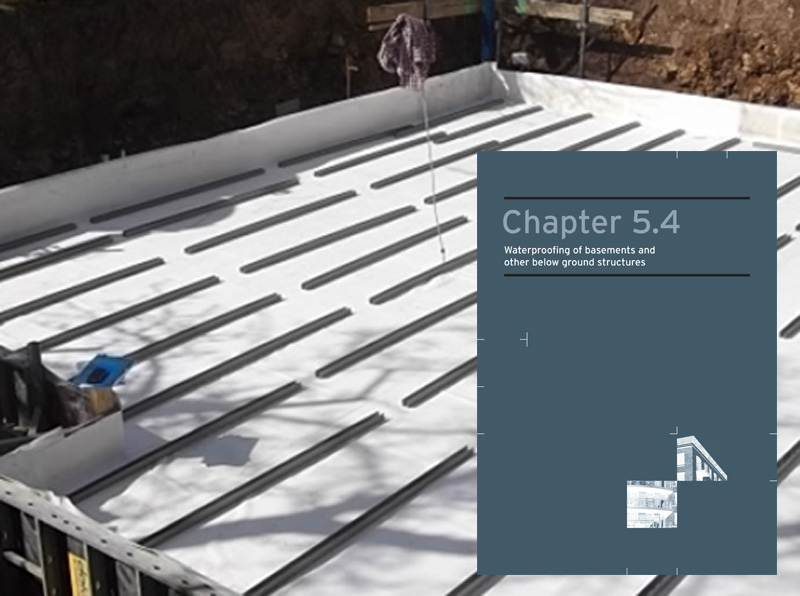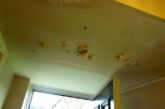
Mark Jones, NHBC’s Head of House-Building Standards, explains the latest advice on Waterproofing Basements.
In 2013, NHBC launched a Basement Campaign highlighting significant issues with the design and construction of basements. Between 2005 and 2013, claims related to waterproofing below ground cost NHBC in the region of £21 million and affected around 890 homes.
A key component of the campaign is the introduction of Chapter 5.4 ‘Waterproofing of basements and other below ground structures’. The new Chapter introduces meaningful benchmarks and supporting technical guidance for a range of situations where the structure is required to resist the ingress of water from the ground and other sources – where ‘normal’ waterproofing arrangements are not considered appropriate.
If you are designing or constructing such buildings, you will need to refer to the new Chapter.
The need for change
Following house price increases and limited availability of land, it is not surprising that we are seeing more below-ground accommodation; especially within our major cities. With this current boom in basements, and the frequency of below-ground waterproofing claims to registrations being around 1,600 times greater than foundation-related claims, below-ground construction remains a cause of concern to NHBC and the house-building industry.
Although the Standards have contained guidance for basements for many years (see Chapter 5.1 ‘Substructure and ground bearing floors’) with increased use, future predictions about heavier rainfall and rising water tables, we believe that now is the right time to expand on this guidance and ensure that the waterproofing of below ground structures is sufficiently robust to meet the high demands placed upon it.
To help the industry achieve much needed improvement in this area, we have thoroughly reviewed our risk management processes, a significant element of which is the development of the new Standards Chapter 5.4.
Design and construction requirements
Chapter 5.4 explains where waterproofing may be required, and where the new Chapter applies. Structures requiring waterproofing range from those where the external ground levels have been raised around the perimeter to within 150mm of the internal floor finish, to deep basements where there may be several levels below ground, and include any other structure near to or below ground level where waterproofing may be required.
Below ground constructions that generally require waterproofing include:
• basements
• semi basements
• below ground parking areas
• lift pits
• cellars
• storage or plant rooms
• service ducts or similar that are connected to the below ground structure
• stepped floor slabs where the step is greater than 150mm
Near to ground constructions that may require waterproofing include:
• external walls where the lowest finished floor level is less than 150mm higher than the external ground level
Design
Robust design should be undertaken by suitably qualified waterproofing experts, and be suitable for the specific ground and building conditions. The design should:
• be undertaken by a suitably qualified specialist who has obtained the Property Care Association ‘Certified Surveyor in Structural Waterproofing’ qualification
• be appropriate to the level of risk – where waterproofing is to a part of the structure forming a space where ‘Grade 3 protection’ is required (habitable accommodation) and more than 600mm of ground is being retained, a combined system comprising two types of waterproofing should be used
• consider the likely ground conditions – where the waterproofing is to more than 15% of the perimeter of the building or more than 600mm high, an appropriate investigation of the ground conditions should be undertaken
Materials
Only systems, including important ancillary components, which have been assessed and proven to provide suitable performance in a given situation should be used. Waterproofing should:
• be independently assessed in accordance with Technical Requirement R3 (the assessment should consider all critical ancillary components)
• include backup systems where pumps are used
Sitework
Recognising the importance of ensuring correct installation in accordance with the manufacturer’s recommendations, waterproofing should only be undertaken:
• by operatives who are suitably trained or qualified
• using proprietary components to form complex changes in direction of the waterproofing and service penetrations
The new Chapter will introduce significant positive change in the way the house-building industry considers below ground waterproofing. This will include an upskilling of designers and installers, and changes to future designs. In order to help facilitate these changes, the new Chapter will become effective only when included in the re-launch of NHBC Standards, which is expected in 2015.
However, while the Chapter will not become effective immediately, it is strongly recommended that the guidance is adopted at the earliest opportunity.
By following the guidance and meeting the performance standards, we are confident that construction quality and robustness of below ground waterproofing will improve significantly, resulting in reduced need for remedial works, cost and disturbance for homeowners.
The new NHBC Standarads Chapter 5.4 can be found in full on the NHBC website: www.nhbc.co.uk







